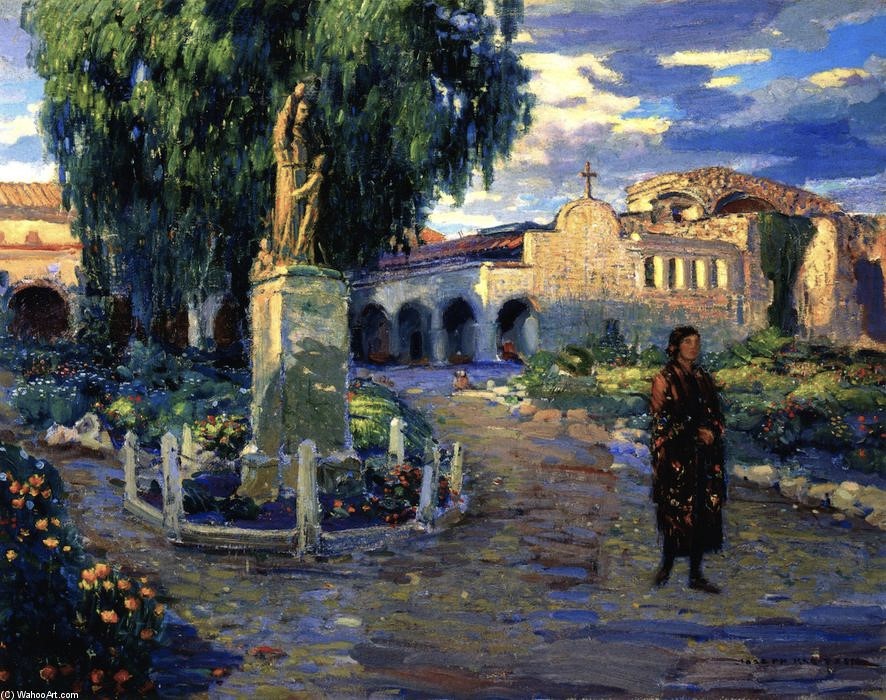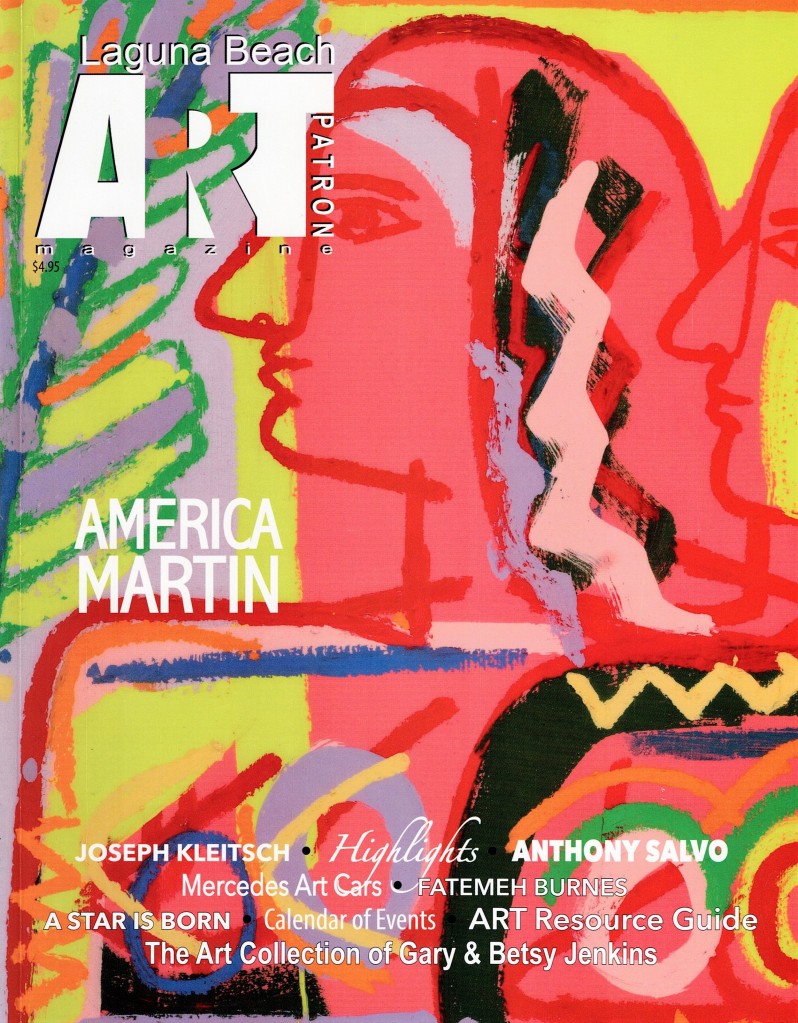
Grove Koger
One of the articles I wrote during my happy stint as Copy Editor of Laguna Beach Art Patron Magazine involved artist Joseph Kleitsch, one of whose paintings figured in a story that cried out to be told. So …
□□□
Laurence Trevino made a prescient choice one memorable day in June 2005 when he was given fifteen minutes to recover possessions from his parents’ home. Located in the Bluebird Canyon neighborhood of Laguna Beach, the structure was teetering on the edge of a cliff created when a hillside collapsed.
One of the objects he grabbed was a painting (above) of Mission San Juan Capistrano that had hung for two decades in the house. His father, Albert, had bought the work for a few dollars at a garage sale, but it meant a lot to the family. “The only reason I grabbed it was because my mom loved the mission so much,” the younger Trevino recalled later. “At least that way they’d always have something they love if they moved into a new house.”
Pat Hagen, an artist and neighbor helping out the family in the aftermath of the disaster, was immediately struck by the painting’s rich colors, and on looking more closely, noticed the signature: Joseph Kleitsch. (That’s him you see below in a self portrait.)

If you recognize that name, then you can probably guess what’s coming. If not, then here’s the story behind the story:
Born in what’s now Romania in 1882, young Joseph Kleitsch showed so much talent for art that his village awarded him a scholarship, and by the time he was seventeen he had studied in Budapest, Munich, and Paris. He immigrated to the United States in 1901 or -02, settling for a time in Cincinnati, then Denver, then Chicago, where he studied and taught at the city’s famous Art Institute. In 1920 he moved to Laguna Beach, where he set up the Kleitsch Academy with his second wife, Edna.
As a teen, Kleitsch had painted Emperor Franz Joseph of Austria, and in his twenties was commissioned to produce official portraits of President Francisco Madero of Mexico and his family. A versatile artist, he had also turned out accomplished (if somewhat stodgy) genre paintings and still lifes. But the famous California light and the relaxed Laguna scene opened Kleitsch’s eyes to a different reality, and he began painting en plein air. His palette brightened, his canvases blossomed, and he was taken up by the Stendahl and Hatfield galleries in Los Angeles. One critic in that city called him a “born colorist,” while another declared that he had “discovered more varieties of loveliness in Laguna Beach than any other artist.”

Kleitsch delighted in depicting his community’s streets and trees and buildings. One of his best works, The Old Post Office of 1922 (above), shows its unassuming general store. It was owned by early Laguna businessman Joseph Yoch, and was a gathering place where residents traded gossip while picking up their mail. Kleitsch’s painting takes a sidelong glance across the store’s wooden steps and into the tall eucalyptus trees growing nearby. (Kleitsch was particularly good at capturing the kaleidoscopic character of these towering but scruffy Australian transplants.) Other memorable scenes of the area include Laguna Landscape of 1925, whose vibrant colors recall those of the Fauves of France, and Park Avenue. Dating from the final years of Kleitsch’s short life, the latter has a lively, spontaneous quality far removed from the formality of his earlier paintings.
Kleitsch became something of a character in his adopted home, setting up his easel in the middle of the road during the day and taking over a piece of sidewalk in the evening to play his accordion. An enthusiastic reporter described the artist in his heyday as a “sun-browned young man whose virility invades his canvases.”
Before his untimely death from a heart attack in 1931, Kleitsch had also produced numerous works depicting Southern California’s missions. He was especially fond of San Juan Capistrano, which he had actually visited and painted several years before moving to Laguna. He produced many more views in the years to come—which brings us back to that fateful day in 2005 when Laurence Trevino saved his mother’s much-loved painting of the mission.
After seeing the signature on the canvas, the neighborly Hagen contacted local art dealer Ray Redfern, who confirmed that the work really was a Kleitsch. The painting was subsequently identified as Evening Shadows, painted in 1923 and long considered “lost.” And just how did it get that way? It may have been bought decades before from the estate of Kleitsch’s widow and handed down through the buyer’s family before ending up in the yard sale where Trevino found it. In any case, Redfern offered to broker its sale free of charge. It might be worth, he estimated, as much as half a million dollars. And in the annals of Lost and Found, that has to be one for the books.

If you’d like to subscribe to World Enough, enter your email address below:
And if you’ve enjoyed today’s post, please share!